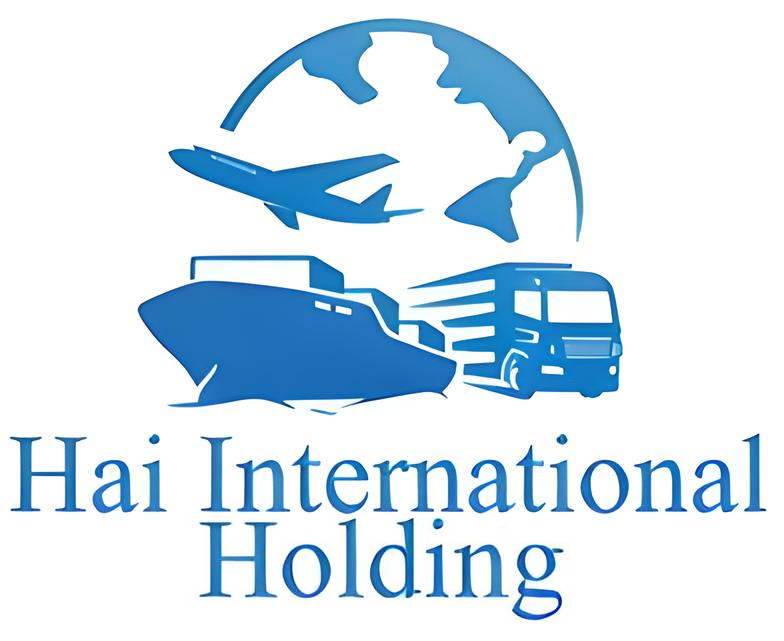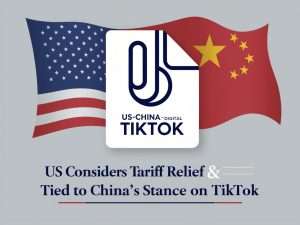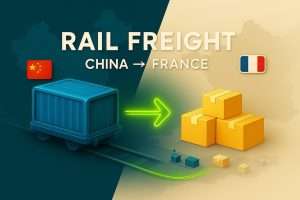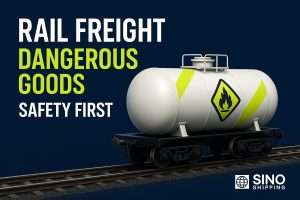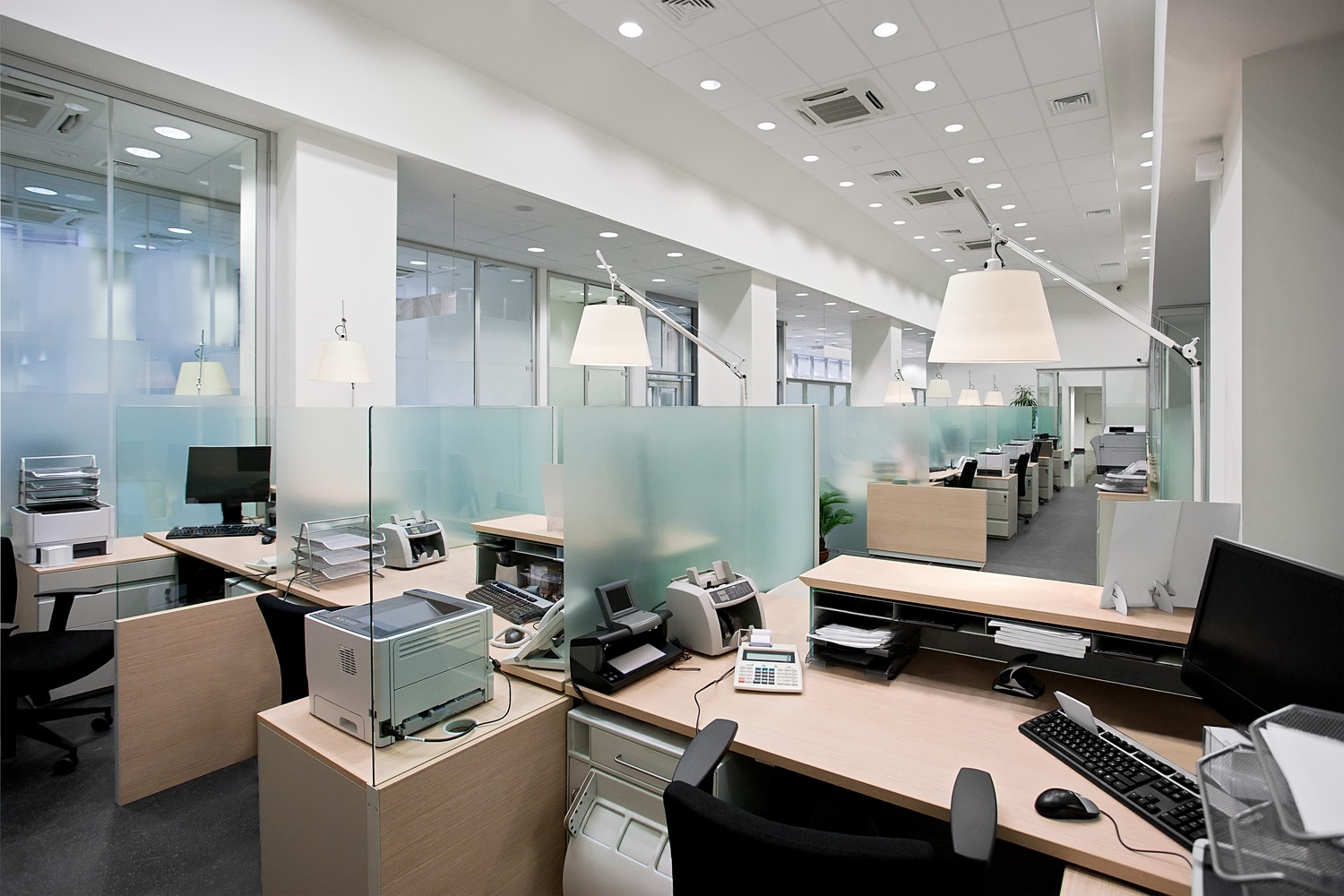Why Cold Chain by Rail Is a Game-Changer for Eurasian Logistics
Meeting the Demands of a New Logistics Era
The global supply chain is changing at lightning speed. Today, the demand for temperature-controlled logistics—especially for food, pharmaceuticals, and chemicals—is at an all-time high. More than ever, businesses must protect the integrity of sensitive products over long distances and across borders.
Did you know? In the last five years, the volume of cold chain rail shipments between China and Europe has grown by over 40% (source: UIC 2024). This explosive growth is no accident: rail freight is fast becoming the new standard for international cold chain transport.

Why Rail Freight Is Disrupting Sea and Air for Cold Chain
Traditional solutions—ocean freight and air cargo—each have their limits:
- Ocean freight is economical for large volumes, but transit times (35–50 days) are simply too long for many perishable or time-sensitive products.
- Air freight offers speed (3–7 days), but the high cost and strict volume/weight limits make it inaccessible for many supply chains.
Enter rail freight:
- Faster than ocean: 12–20 days from China to Europe on average.
- More affordable than air: up to 50% cost savings for equivalent volumes.
- Scalable: Suited for both FCL and LCL shipments.
- Eco-friendly: Up to 80% lower CO₂ emissions than air cargo (source: CER 2023).
The Real-World Stakes: What’s at Risk?
- Food exporters want mangoes, avocados, and chilled meat to arrive as fresh as when they left the packing house.
- Pharma companies can’t afford even the slightest temperature deviation for vaccines and biologics.
- Chemical producers face strict EU import controls—reliable cold chain is non-negotiable.
A single temperature breach can mean total cargo loss, regulatory fines, and damaged reputation. That’s why more and more shippers are turning to the game-changing reliability of rail-based cold chain logistics.
Are you shipping sensitive goods between China and Europe? Rail freight is now one of the most reliable solutions to guarantee freshness and safety—door to door, border to border.
What Is a Reefer Rail Container? (Definition, Tech & Specs)
What Is a Reefer Rail Container?
A refrigerated rail container, often called a reefer, is a specialized, insulated shipping container equipped with an independent refrigeration unit.
Its mission: to maintain precise temperature control for sensitive cargo during transit across thousands of kilometers—no matter the season.
- Temperature range: typically from -25°C to +25°C
- Purpose: Protect the quality, safety, and compliance of goods like fresh produce, pharmaceuticals, and chemicals during rail freight between China and Europe.

How Does a Reefer Container Work on the Rail?
Unlike a standard container, a rail reefer integrates both advanced insulation and a built-in refrigeration system powered throughout the journey.
Key technical features:
- Continuous power supply:
- On rail, reefers draw power from onboard diesel generators, train-based electric lines, or specialized power wagons to ensure non-stop cooling—even at border crossings or stops.
- Real-time monitoring:
- Most containers are fitted with IoT sensors for constant temperature, humidity, and door status monitoring—alerts are sent instantly in case of deviation.
- Autonomy:
- Units are engineered to withstand long journeys (12–20 days) without any temperature interruption, critical for perishable and regulated cargo.
Rail vs. Ocean & Road Reefer Containers: Key Differences
| Feature | Rail Reefer | Ocean Reefer | Road Reefer |
|---|---|---|---|
| Power Source | Onboard generator or rail electricity | Ship’s power supply, backup gens | Truck engine/genset |
| Journey Length | 12–20 days (China–Europe) | 35–50 days (China–Europe) | 1–5 days (domestic/intra-Europe) |
| Border Crossings | Multiple, requires multi-system support | Usually port-to-port | Multiple, but short segments |
| Tracking | Real-time GPS, IoT enabled | Often real-time, but less granular | GPS, less advanced for temp |
| Cargo Handled | Palletized, containerized, high-value | Bulk, containerized | Palletized, often mixed loads |
Rail reefers are purpose-built for uninterrupted cross-continental cold chain—bridging the gap between the scale of ocean and the speed of road/air.
Main Specs at a Glance
| Container Size | Internal Volume (CBM) | Payload (kg) | Temp. Range (°C) | Height |
|---|---|---|---|---|
| 20’ Reefer | 28–29 | 28,000 | -25 to +25 | 2.6 m (std) |
| 40’ Reefer | 67–68 | 26,000 | -25 to +25 | 2.6 m (std) |
| 40’ High Cube Reefer | 76–77 | 26,000 | -25 to +25 | 2.9 m (HC) |
Pro tip: Always confirm internal volume and payload with your logistics provider—variations exist depending on manufacturer and route.
3. What Products Need Temperature-Controlled Rail Transport?
As global trade grows, the demand for temperature-controlled rail logistics is skyrocketing across the China–Europe corridor. Many products require a consistent cold chain to maintain quality, compliance, and value throughout their journey.
Key Products Shipped by Rail Reefer Containers
- Fresh Fruits and Vegetables
- Examples: kiwis, mangos, berries, citrus, asparagus.
- Value: Preserves freshness, prevents spoilage, ensures produce arrives in “farm-to-market” condition.
- Meat, Seafood, and Dairy Products
- Examples: chilled beef, pork, poultry, salmon, shrimp, cheese, yogurt.
- Note: Export flows now run both ways—China to Europe and Europe to China, especially for premium meats and cheeses.
- Pharmaceuticals and Biotech Products
- Examples: vaccines, insulin, blood products, biologics, laboratory reagents.
- Key point: Some products require strict temperature ranges (2–8°C, -20°C, even ultra-cold for vaccines), and compliance with Good Distribution Practices (GDP).
- Flowers and Sensitive Plants
- Examples: cut flowers, ornamental plants, bulbs.
- Value: Controlled humidity and temperature to prevent wilting and loss of value.
- Sensitive Chemicals
- Examples: certain adhesives, reagents, specialty chemicals.
- Importance: Stable temperatures ensure product integrity and safe handling.
- Special Cases
- E-commerce food shipments (meal kits, specialty foods, ready-to-eat meals)
- Semi-finished food ingredients
- Cosmetics (temperature-sensitive creams, serums, organic ingredients)
Why Is Cold Chain Rail Vital for These Products?
- Maintains quality and safety: Cold chain breaks can cause spoilage, loss of efficacy, or regulatory non-compliance.
- Reduces product loss: Consistent temperatures prevent shrinkage and preserve shelf life.
- Meets regulatory standards: Especially critical for pharma and food exports.
Did You Know?
According to industry estimates, pharmaceuticals and agrifood products account for over 40% of all reefer rail shipments between China and Europe.
(Source: Rail Freight Group/Logistics industry reports, 2023)
4. How Does Reefer Rail Freight Work from China to Europe?
Moving temperature-sensitive goods from China to Europe by rail is a multi-stage process that combines speed, precision, and strict compliance at every step. Here’s how modern cold chain rail logistics keep your cargo safe from pickup to delivery.
Typical Route: From China’s Major Hubs to European Destinations
Reefer containers usually depart from China’s leading logistics platforms, such as:
- Xi’an
- Chongqing
- Zhengzhou
- Yiwu
…and travel directly to key European hubs, including:
Border Crossings & Sensitive Checkpoints:
- Alashankou (China/Kazakhstan)
- Dostyk (Kazakhstan)
- Brest (Belarus/Poland)
Each checkpoint includes inspection, documentation, and sometimes change of rail gauge.
End-to-End Monitoring: IoT Sensors and Real-Time Alerts
- Advanced IoT sensors continuously monitor:
- Temperature
- Humidity
- Door openings
- Data loggers record every reading for full traceability
- Real-time alerts are sent if temperature drifts outside of set limits, allowing instant intervention
Example:
If a container of vaccines deviates from the required 2–8°C range at the Belarus border, operators receive an instant SMS/email alert. The unit is inspected and recalibrated before the train continues, ensuring compliance and safety.
Customs & Health Procedures: Cold Chain Matters
Customs processes are accelerated for perishable and sensitive goods but require:
- Accurate temperature logs
- Sanitary certificates
- Proper labeling and cargo declarations
- Pre-notification to border authorities
Sanitary inspections may include physical checks or electronic validation of data logger records, especially for pharmaceuticals or foodstuffs.
Control Points and Cold Chain Steps: (Suggested Route Map/Table)
| Step | Location | What Happens? | Cold Chain Action |
|---|---|---|---|
| Loading & Sealing | Chinese platform | Cargo loaded, container sealed | Temperature set, sensors activated |
| China exit border | Alashankou/Dostyk | Export customs, border check | Temperature/humidity logged |
| Eurasian transit | Across Kazakhstan & Russia | Long-distance haul | Remote IoT monitoring, periodic checks |
| EU entry border | Brest (Belarus/Poland) | Import customs, possible gauge change | Data logger checked, alert status verified |
| Final delivery | Destination city | Local customs, delivery to client | Final temp record checked, container unsealed |
The Reefer Rail Advantage: Total Transparency and Peace of Mind
- Continuous tracking means no cold chain break goes unnoticed
- Full compliance with EU, Chinese, and international regulations
- Faster than sea, greener than air—ideal for modern supply chains
Shipping vaccines, high-value foods, or biotech? Reefer rail offers the right blend of speed, safety, and reliability for your Eurasian freight.
5. Advantages: Why Choose Rail for Cold Chain Transport?
When it comes to shipping temperature-sensitive goods across Eurasia, rail freight offers a unique balance of speed, reliability, cost-efficiency, and sustainability. Here’s why more companies are switching to refrigerated rail transport for their cold chain needs.
Faster Than Sea, Cheaper Than Air
- Transit Time:
Rail delivers your chilled or frozen products in 12–20 days, compared to 35–50 days by sea.
Need it even faster? Air is quickest (3–7 days) but at a significantly higher cost. - Cost Efficiency:
On average, rail is 50% less expensive than air freight for the same shipment volume, especially for mid- to high-volume cargo. - Predictable Schedules:
Fixed train departures and less exposure to weather delays mean greater reliability for your cold chain.
Continuous Cold Chain Integrity & Real-Time Traceability
- No Cold Chain Breaks:
Modern rail reefer containers offer end-to-end temperature control, IoT monitoring, and instant alerts if conditions fluctuate. - Full Traceability:
Detailed temperature and humidity logs are available for compliance and quality assurance—crucial for food and pharma shippers.
Greener Logistics for a Sustainable Future
- Lower CO₂ Emissions:
Rail produces up to 80% less carbon emissions than air, and substantially less than road.
If you’re aiming for a greener supply chain, rail is the eco-smart option.
Comparison Table: Cold Chain Shipping Modes (China–Europe)
| Criteria | Sea Freight | Rail Freight (Reefer) | Air Freight |
|---|---|---|---|
| Transit Time | 35–50 days | 12–20 days | 3–7 days |
| Average Cost | $ | $$ | $$$$ |
| Cold Chain Stability | Medium (multiple handling points) | High (direct, monitored) | Very high (short transit, but cost) |
| CO₂ Emissions | Low | Very low | Highest |
| Traceability | Basic (often delayed) | Real-time, full logs | High |
| Best For | Bulk, non-urgent, lower value | Mid-value, time-sensitive, perishable | Urgent, high-value, short shelf life |
Key Takeaway:
Rail refrigerated freight bridges the gap—it’s faster than sea, far more affordable than air, and provides continuous cold chain control. For many shippers, this is the perfect solution to move sensitive products efficiently, safely, and sustainably between China and Europe.
6. Challenges, Pitfalls & Compliance: How to Avoid Cold Chain Failures in Rail Freight
While refrigerated rail transport between China and Europe offers outstanding advantages, it comes with its own set of challenges and regulatory hurdles. Understanding these risks—and knowing how to avoid them—is critical for success in cross-border cold chain logistics.
Main Challenges of Rail Reefer Logistics
- Limited Reefer Availability:
Demand for temperature-controlled containers often exceeds supply—especially during peak seasons or after disruptions. Advance booking is essential. - Technical Failures:
Even modern reefers are not immune to mechanical or power issues. A breakdown can jeopardize an entire shipment if not promptly resolved. - Customs & Border Delays:
Strict European and Chinese regulations mean that even minor documentation errors or random inspections can lead to long, costly holds.
Typical Pitfalls to Watch Out For
- Incomplete or Incorrect Documentation:
Missing or wrongly prepared paperwork (commercial invoice, health certificates, HS codes) is the #1 cause of border delays. - Improper Temperature Settings:
Failure to pre-program the reefer unit or set the correct temperature range puts sensitive cargo at immediate risk. - Underestimating Lead Times:
Some shippers forget to account for pre-rail handling, customs processing, or last-mile delivery—leading to missed deadlines.
Compliance Requirements for Cross-Border Cold Chain
- Sanitary & Phytosanitary Certificates (SPS):
Required for food, flowers, and many pharmaceutical products. - Strict Cold Chain Protocols:
Real-time temperature logs, GPS tracking, and full chain-of-custody are now standard for regulated goods. - Customs Declarations:
Every reefer shipment must be accompanied by precise and compliant documentation, including all import/export paperwork and product details.
Best Practices: How to Avoid Common Issues
- Book Early & Confirm Capacity:
Secure your reefer container as soon as possible, especially for high season routes. - Demand Real-Time Tracking & Data Logs:
Use providers who offer full transparency—including sensor alerts, downloadable logs, and live cargo status. - Invest in Cold Chain Insurance:
Protect your shipment value against unforeseen breakdowns, delays, or spoilage. - Double-Check Documentation:
Prepare, review, and cross-verify all customs and health certificates before shipping. - Regularly Test Reefer Settings:
Confirm that the temperature and alarm thresholds are correctly configured before departure.
Common Mistakes & How to Avoid Them
| Mistake | Risk | How to Avoid |
|---|---|---|
| Booking late, no container available | Shipment delays, lost sales | Reserve reefers as early as possible |
| Missing/incomplete documents | Border delays, fines | Use a compliance checklist every time |
| Incorrect temperature set | Product spoilage | Double-check & monitor settings |
| No real-time monitoring | Undetected cold chain break | Choose providers with IoT tracking |
| No insurance | Financial loss if spoilage | Always insure temperature-sensitive cargo |
Pro Tip:
The most successful shippers treat cold chain rail freight as a process, not just a booking. Stay proactive, document everything, and partner with logistics providers who specialize in compliance and cold chain technology.
7. Practical Checklist: Preparing Your Reefer Rail Shipment
Proper preparation is the foundation of a successful cold chain shipment by rail from China to Europe. Use this practical checklist to ensure your sensitive cargo stays safe, compliant, and on schedule.
Is Your Cargo Compatible with Rail Reefer Transport?
Before you book, make sure your goods are truly suitable for refrigerated rail shipment.
- Verify temperature requirements: Can your products be maintained within the standard reefer range (typically –25°C to +25°C)?
- Check regulatory status: Are there any restrictions or special documentation needed for your specific commodity in the countries of transit and destination?
- Assess transit time tolerance: Is your product able to handle a 12–20 day journey?
Prepare Suitable Packaging and Pallets
Cold chain shipping is about more than just the container!
- Choose insulated packaging for highly sensitive or perishable items.
- Use moisture-resistant materials to protect against condensation or accidental thawing.
- Palletize goods according to international standards—secure, stackable, and suitable for rail handling.
Gather All Required Documentation
Missing paperwork is the #1 cause of delays at borders. Be ready with:
- Commercial invoice (accurate and detailed)
- Packing list
- Sanitary and/or phytosanitary certificates (for food, flowers, pharma, etc.)
- Import/export permits if needed
- Temperature validation reports for regulated pharmaceuticals
Control & Calibrate the Reefer Container Before Loading
Don’t leave anything to chance:
- Check the calibration of the refrigeration unit and sensors.
- Pre-set the temperature to the correct range for your goods.
- Inspect for physical damage or door seal issues before loading.
Negotiate Real-Time Tracking & Data Access
Full visibility = maximum security and compliance.
- Discuss real-time tracking options with your logistics partner—make sure GPS and sensor alerts are standard.
- Request access to data logs for temperature, humidity, and door status.
- Agree on communication protocols for immediate alerts if any parameter goes out of range.
Rail Reefer Pre-Shipment Checklist
| Step | What to Do | Why It Matters |
|---|---|---|
| Product Compatibility | Check temp. needs & regulations | Avoids rejection, spoilage, or fines |
| Packaging | Insulated, moisture-resistant | Maintains quality & integrity |
| Documentation | Gather invoices, certs, permits | Prevents border delays & penalties |
| Reefer Calibration | Set temp, check sensors | Ensures cold chain from day one |
| Tracking & Data | Confirm GPS, request logs | Guarantees traceability & transparency |
Pro Tip:
The more you prepare in advance, the less you worry in transit. Build a partnership with your logistics provider—ask questions, demand transparency, and always double-check critical details before your reefer shipment leaves the platform.
11. FAQ – Cold Chain Rail Freight China–Europe
What products can be shipped in rail reefer containers?
Rail reefer containers are used to transport a variety of temperature-sensitive goods. These include fresh fruits and vegetables, meat, seafood, dairy, pharmaceuticals such as vaccines and insulin, flowers, chemicals, and even certain cosmetics. If your products require stable temperatures during international transit, refrigerated rail is a reliable solution.
How long does cold chain rail freight take from China to Europe?
A typical cold chain rail journey from China to Europe takes between 12 and 20 days, depending on the specific route and cities involved. Major platforms like Xi’an, Chongqing, Zhengzhou, and Yiwu offer regular departures to European hubs such as Duisburg, Lyon, and Madrid. Rail is much faster than sea freight and provides a more cost-effective option compared to air.
How is temperature monitored during the rail journey?
Temperature inside a rail reefer container is continuously monitored using modern IoT sensors for temperature, humidity, and door status. These systems allow for real-time alerts if any parameter moves out of the specified range, with all data logged to ensure traceability and compliance throughout the journey.
Can pharmaceuticals and vaccines be shipped by rail?
Pharmaceuticals and vaccines can be safely transported by rail, provided all cold chain protocols are followed. Rail reefer containers are designed to maintain precise temperatures and meet the demanding standards of the pharma industry, with full data logging and compliance documentation available for every shipment.
What are the risks if the temperature changes during transport?
A temperature excursion during transit can compromise your cargo. For food, this may mean a loss of freshness or even regulatory rejection. For pharmaceuticals, it can lead to a loss of efficacy or require a product recall. This is why rigorous monitoring, pre-departure calibration, and backup systems are essential parts of cold chain rail freight.
Is cold chain rail freight more reliable than maritime shipping?
Cold chain rail freight offers several advantages over maritime transport for temperature-sensitive goods. Rail is typically much faster, reducing the time products spend in transit and the risk of temperature fluctuations. It also allows for better real-time tracking and is less likely to be impacted by port congestion or adverse weather. However, the best mode depends on your product requirements, budget, and delivery deadlines.
